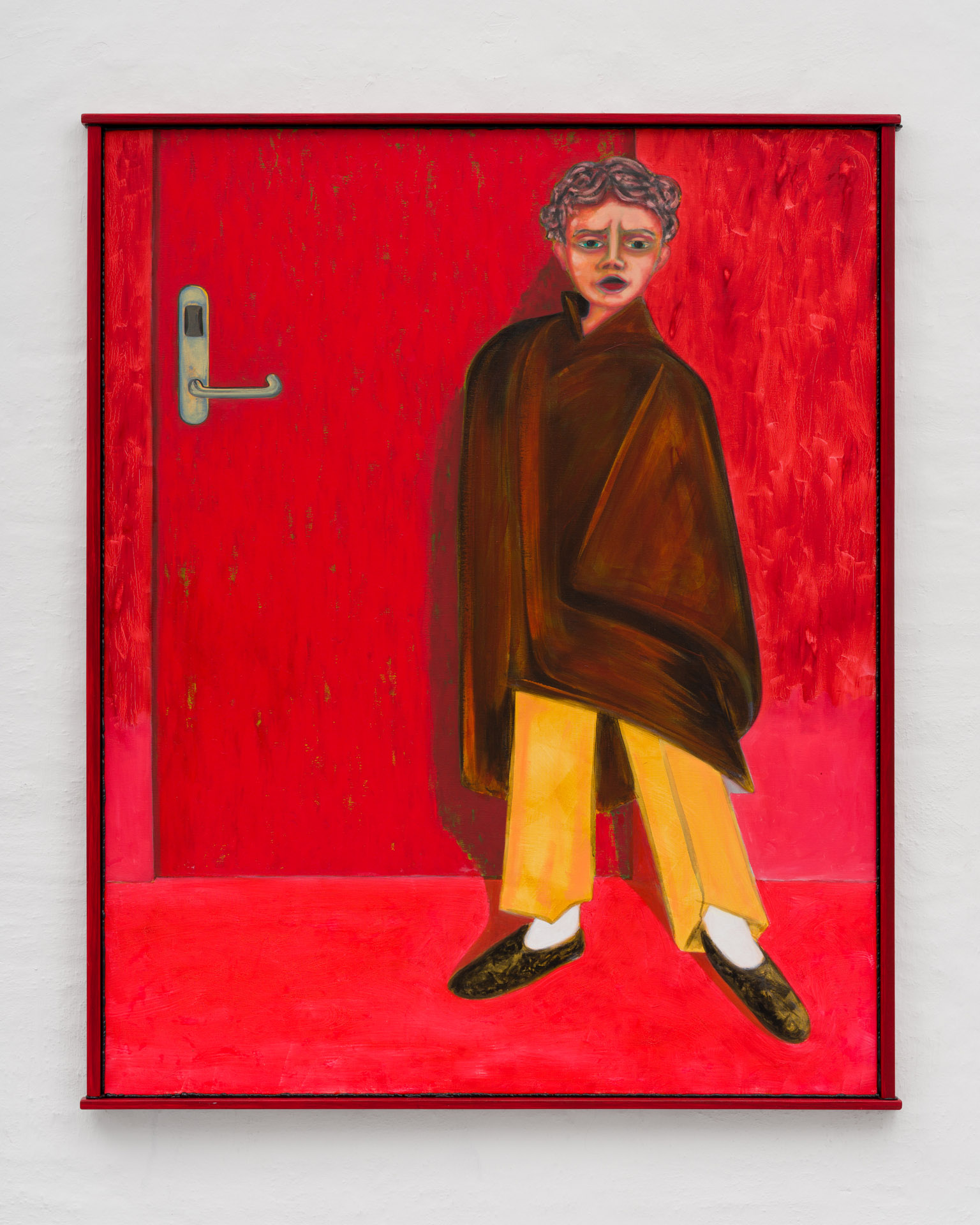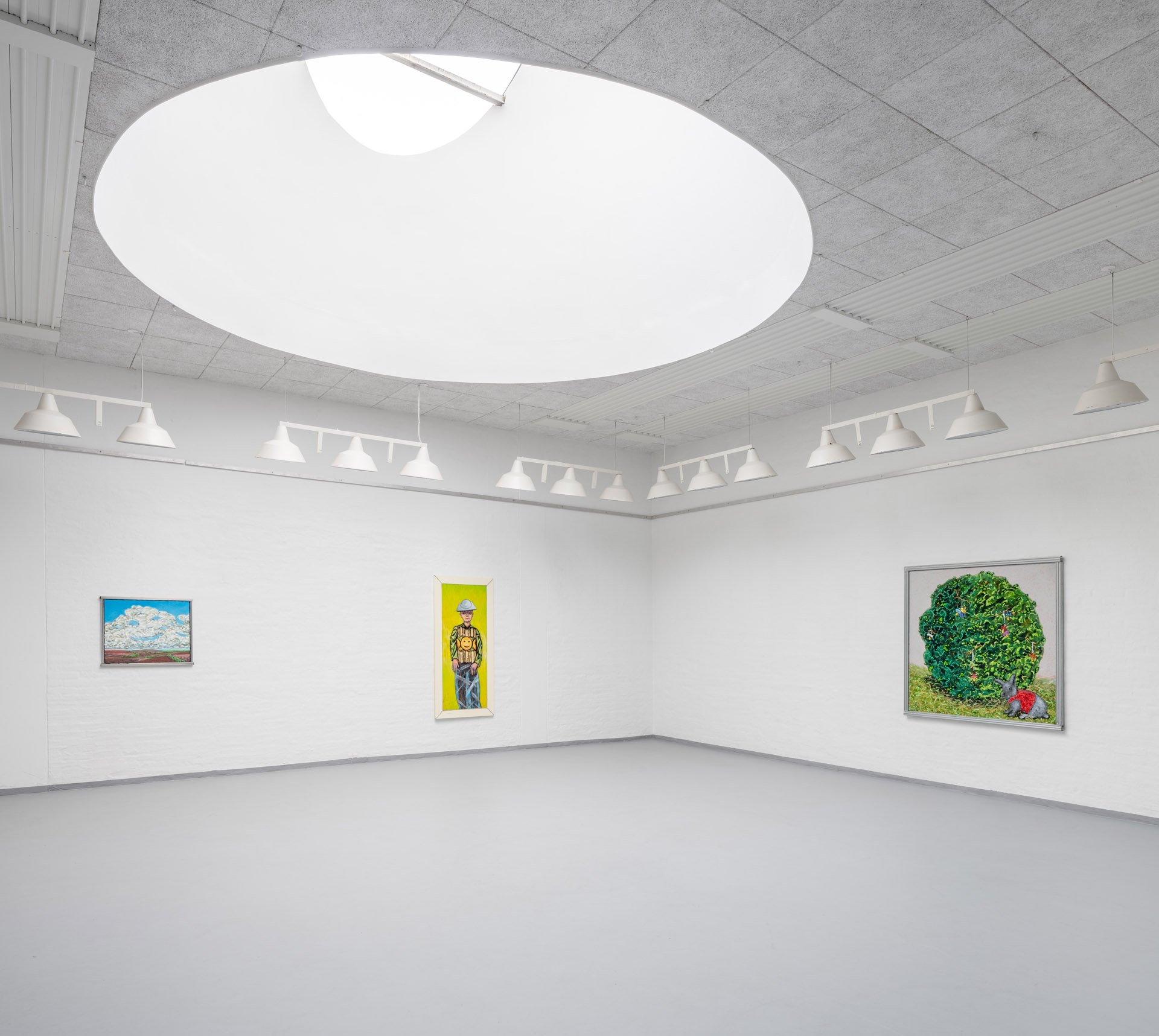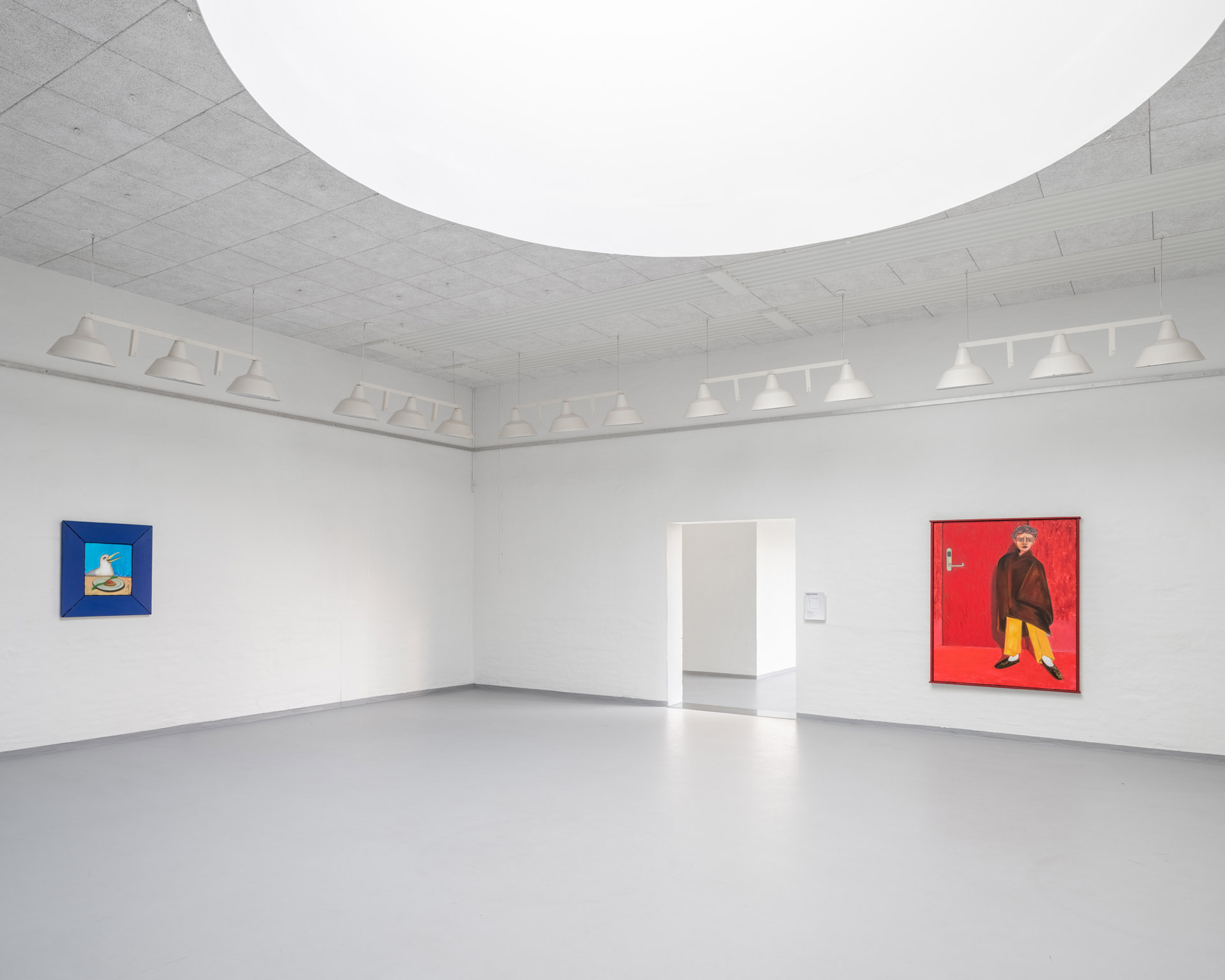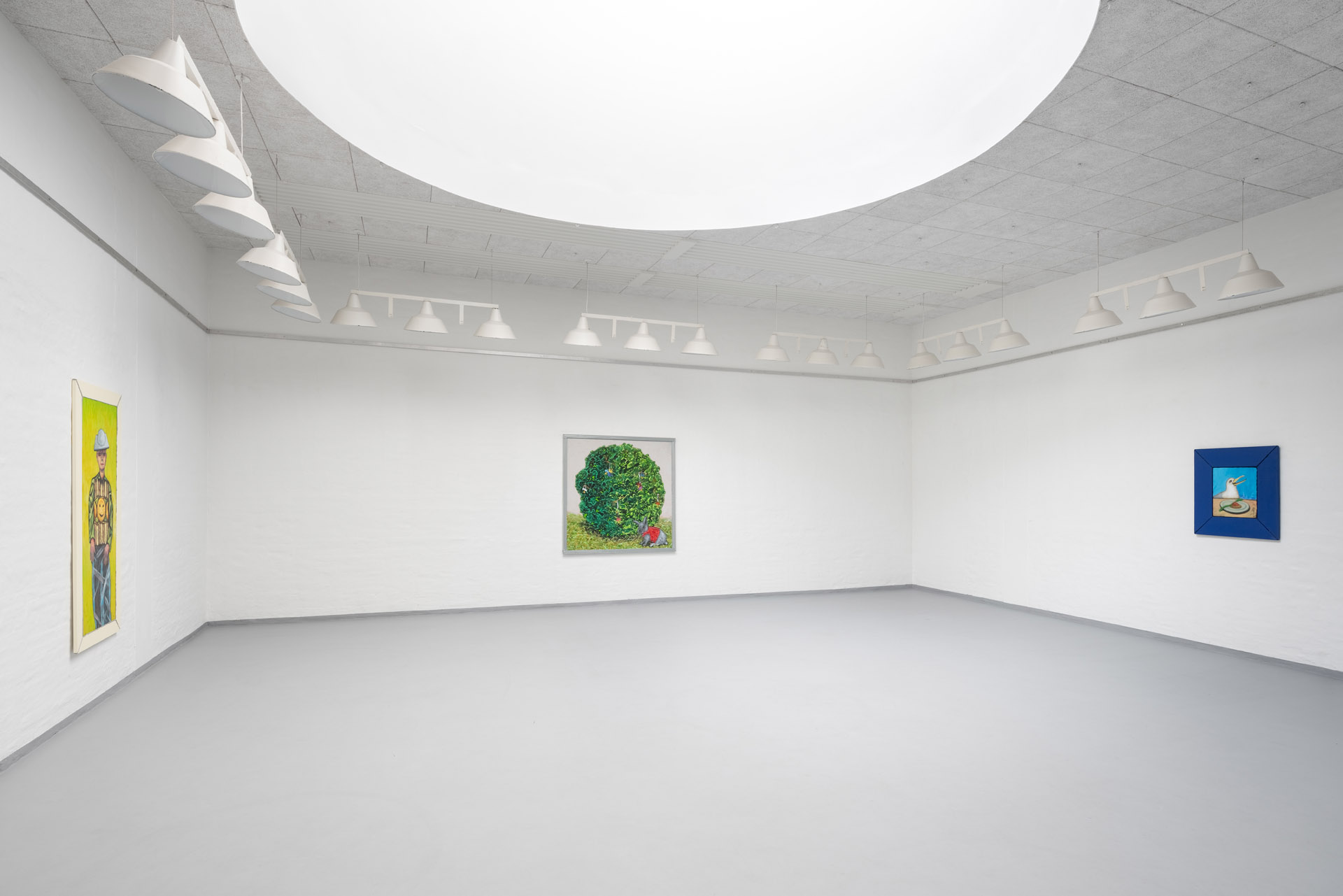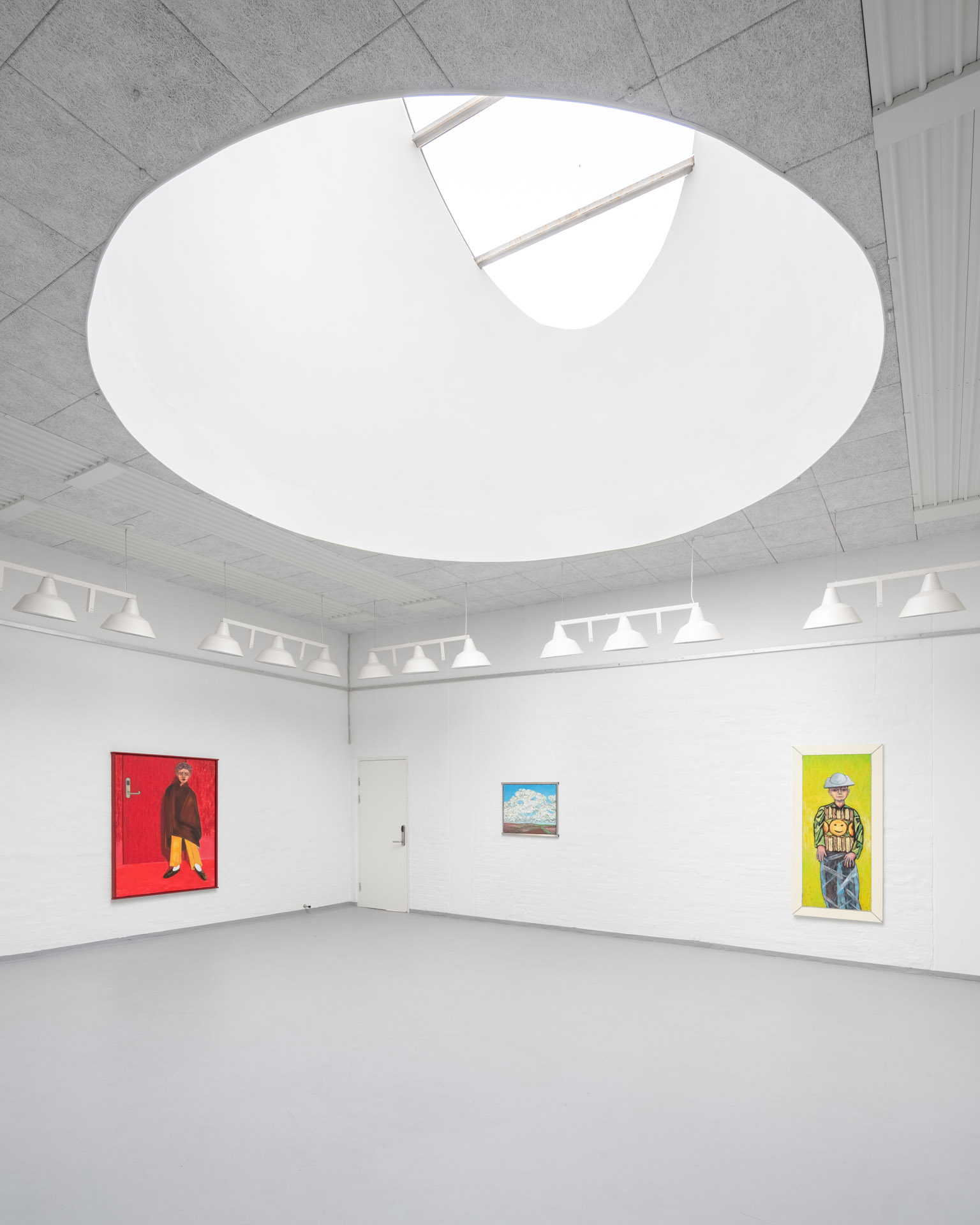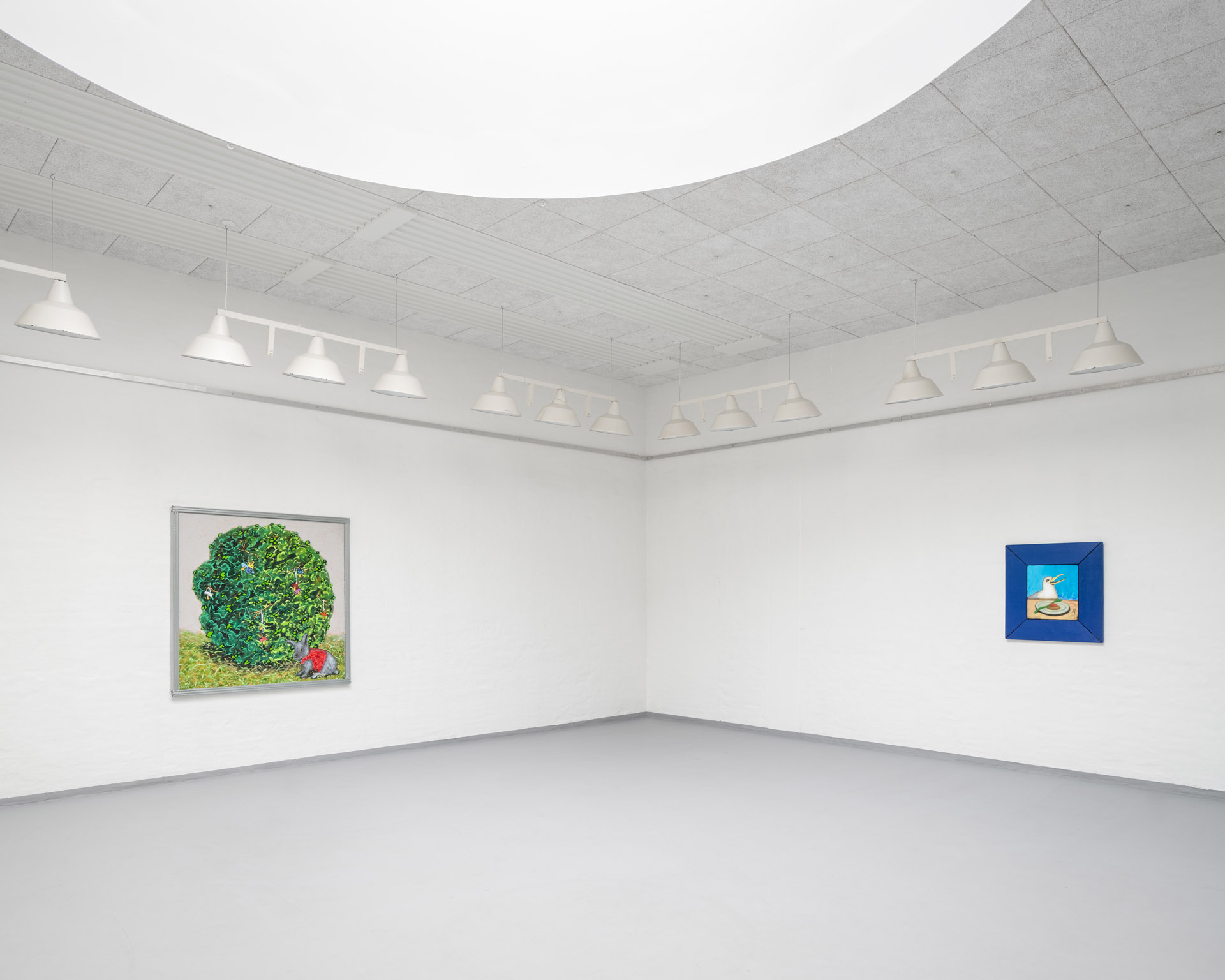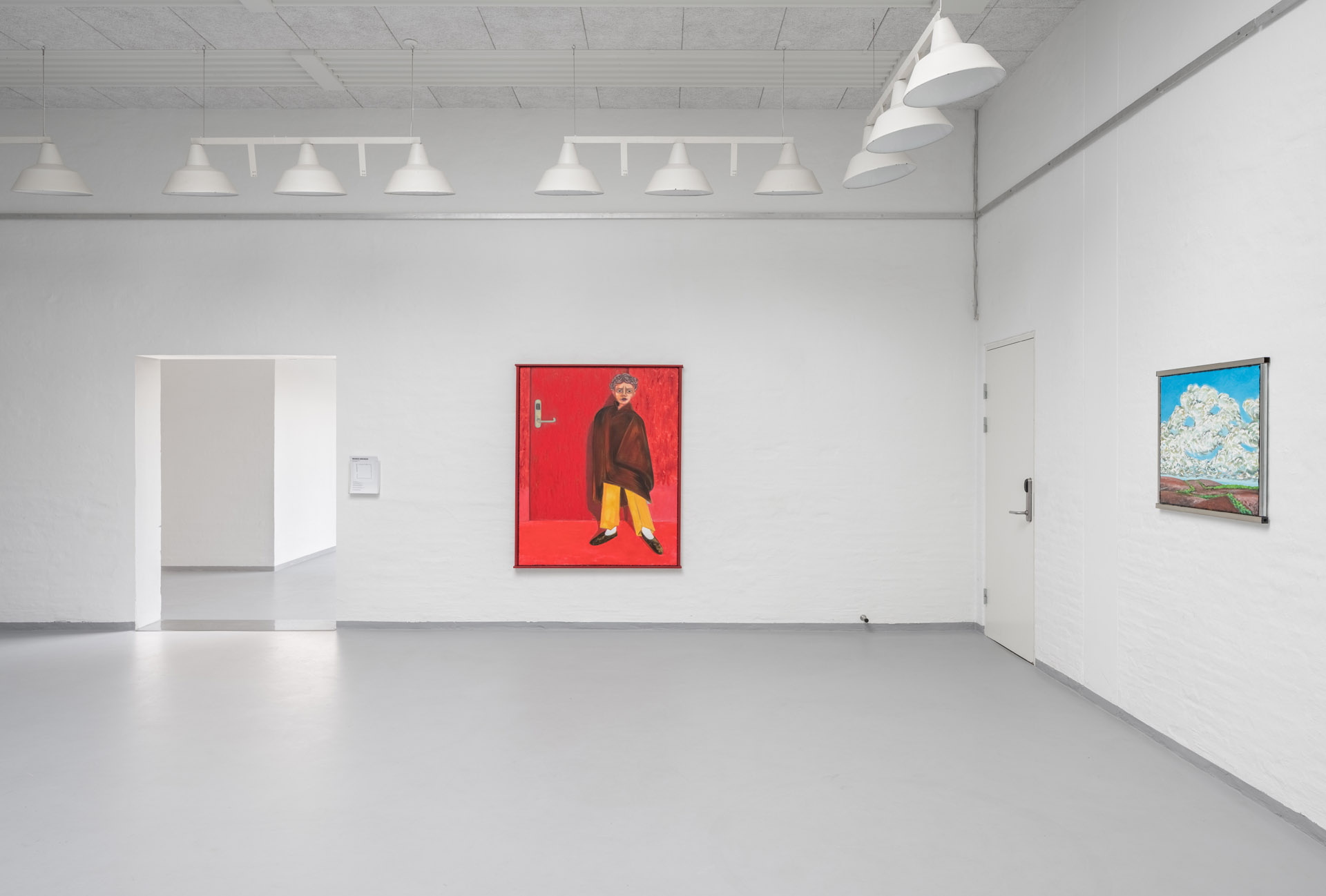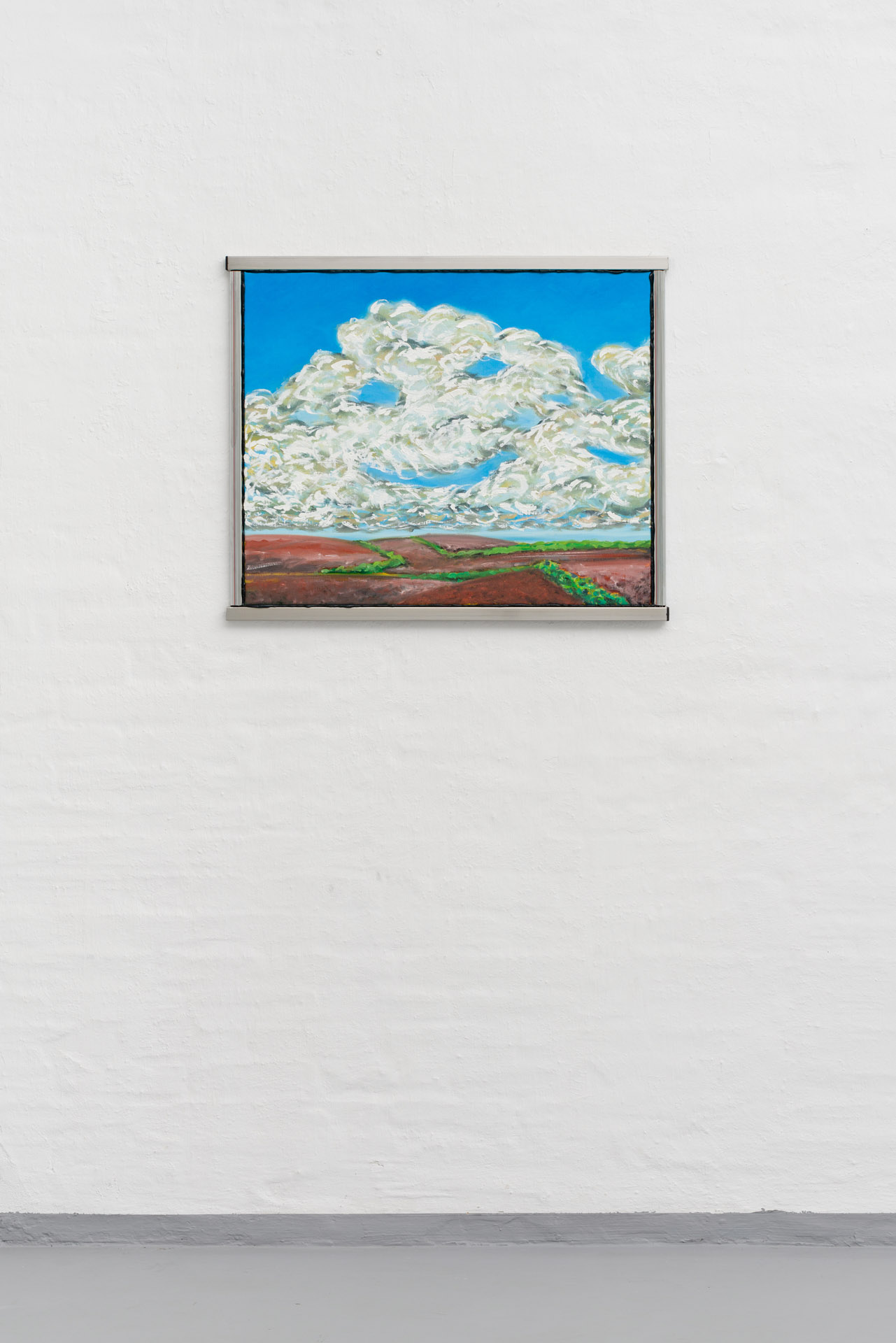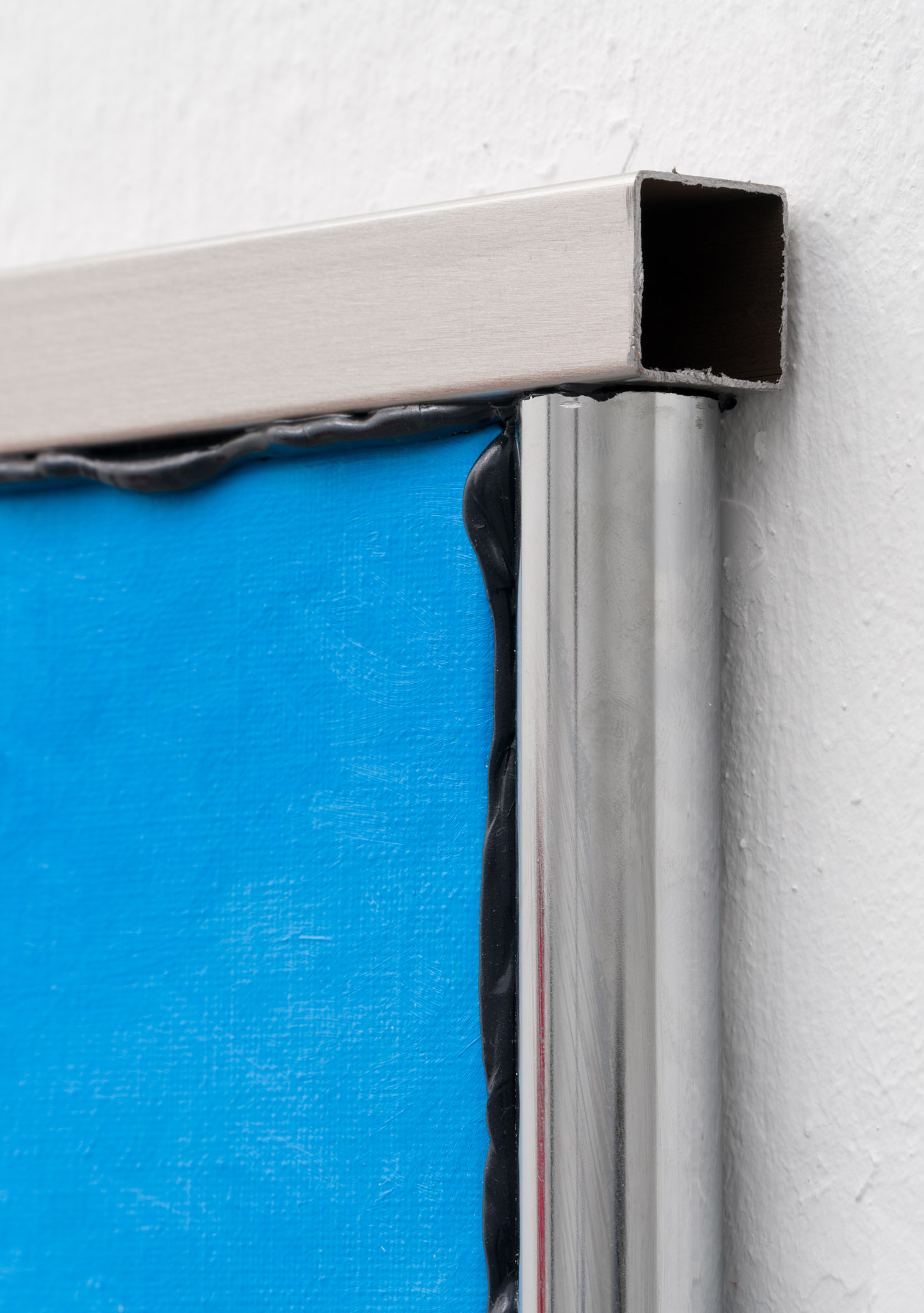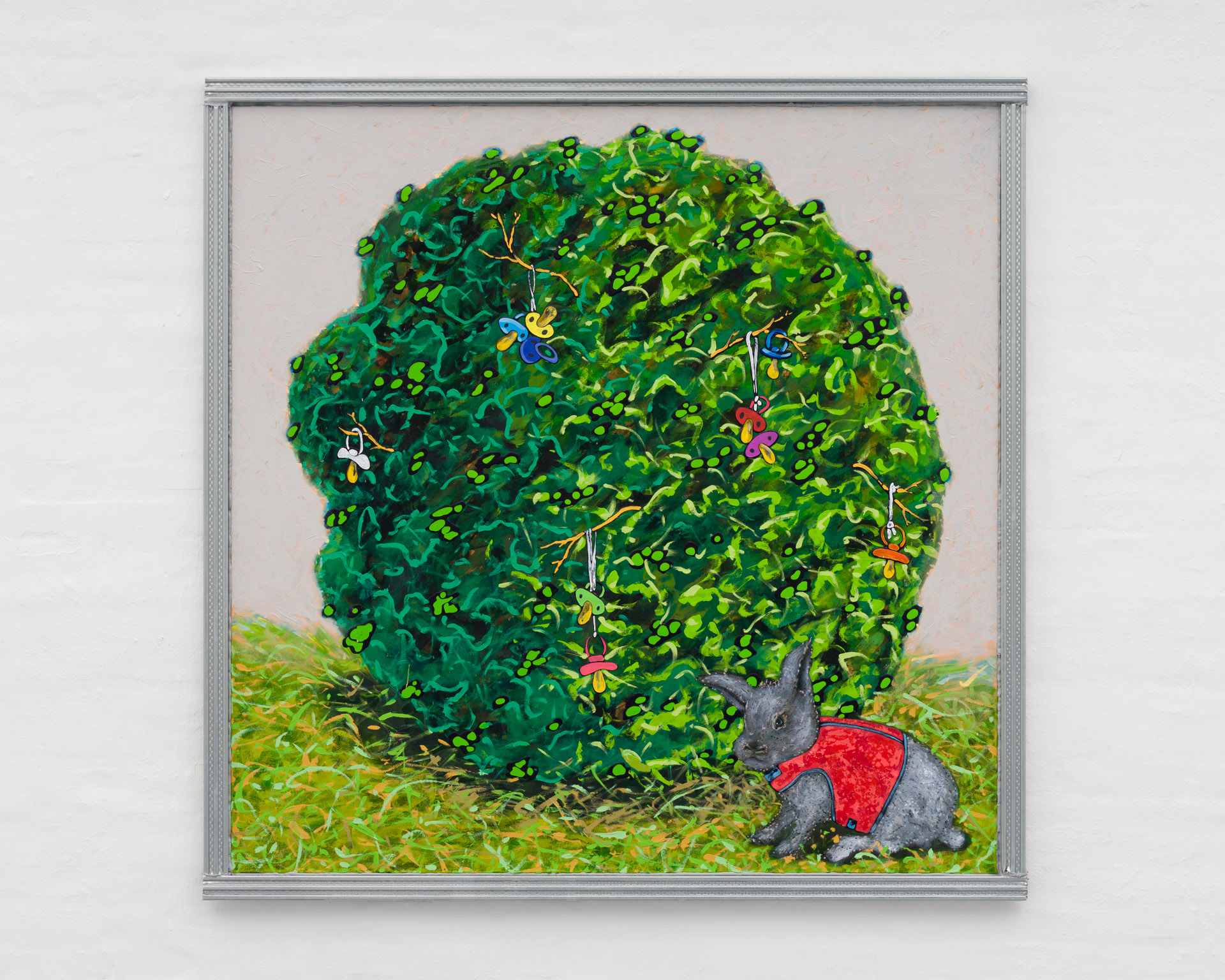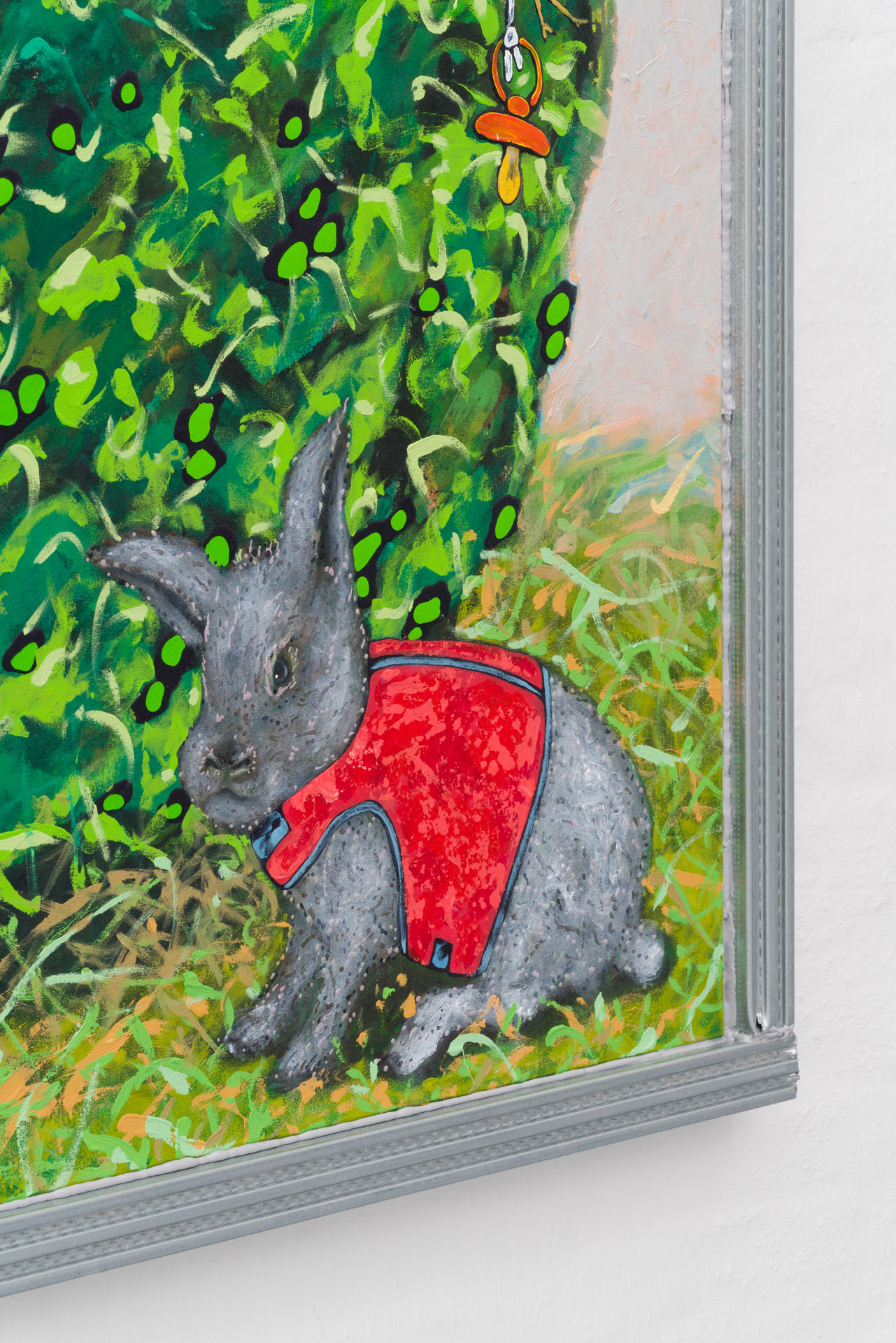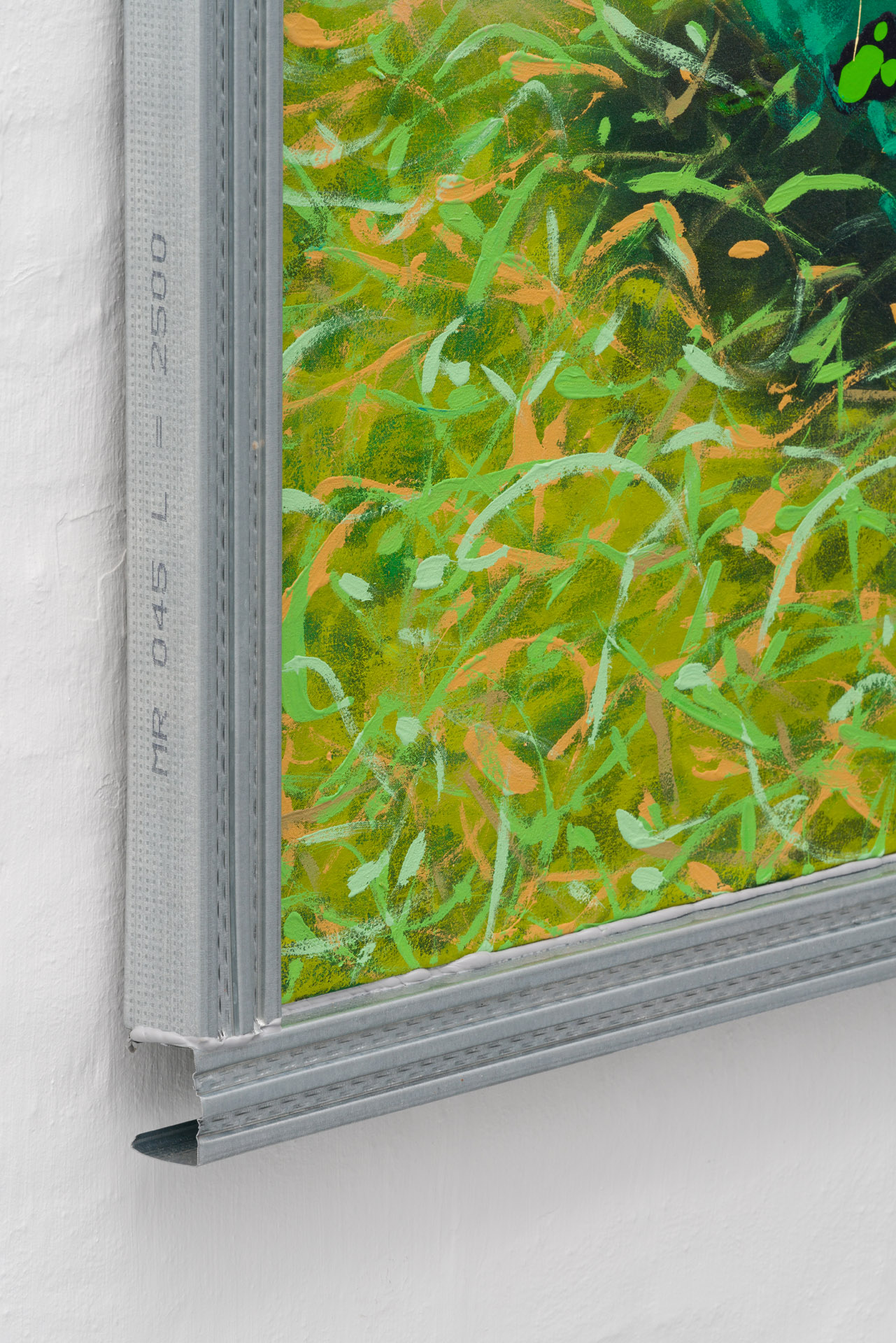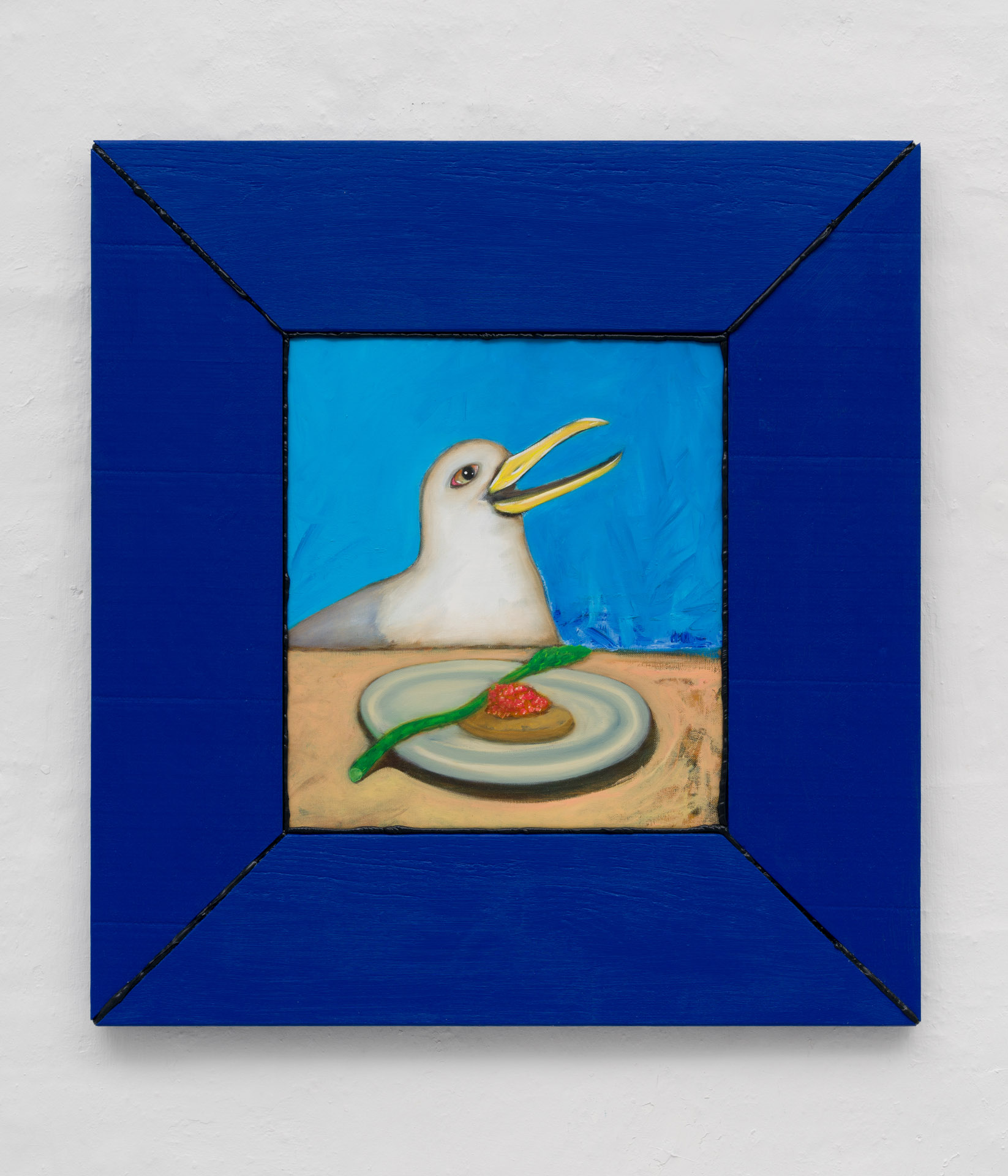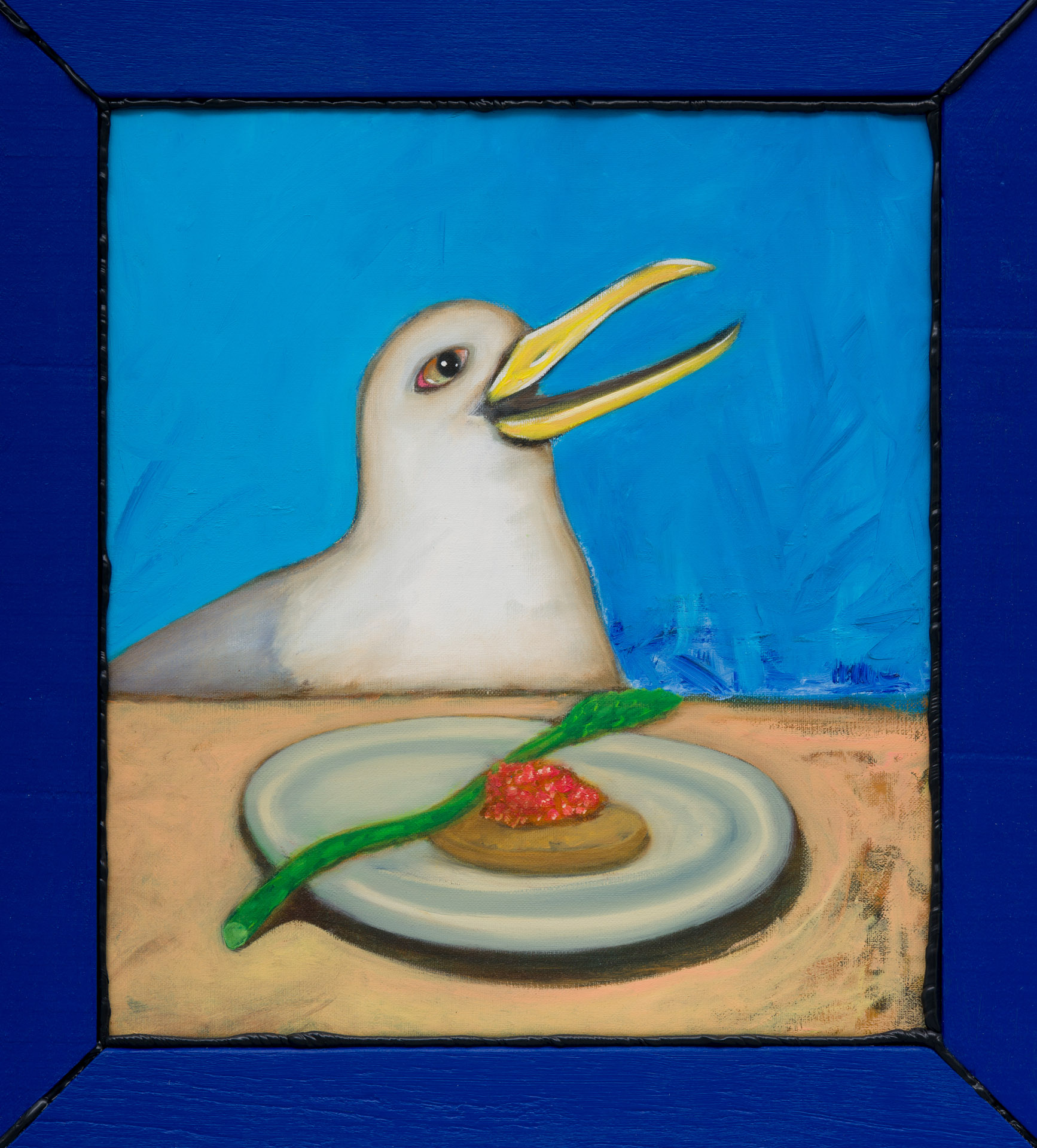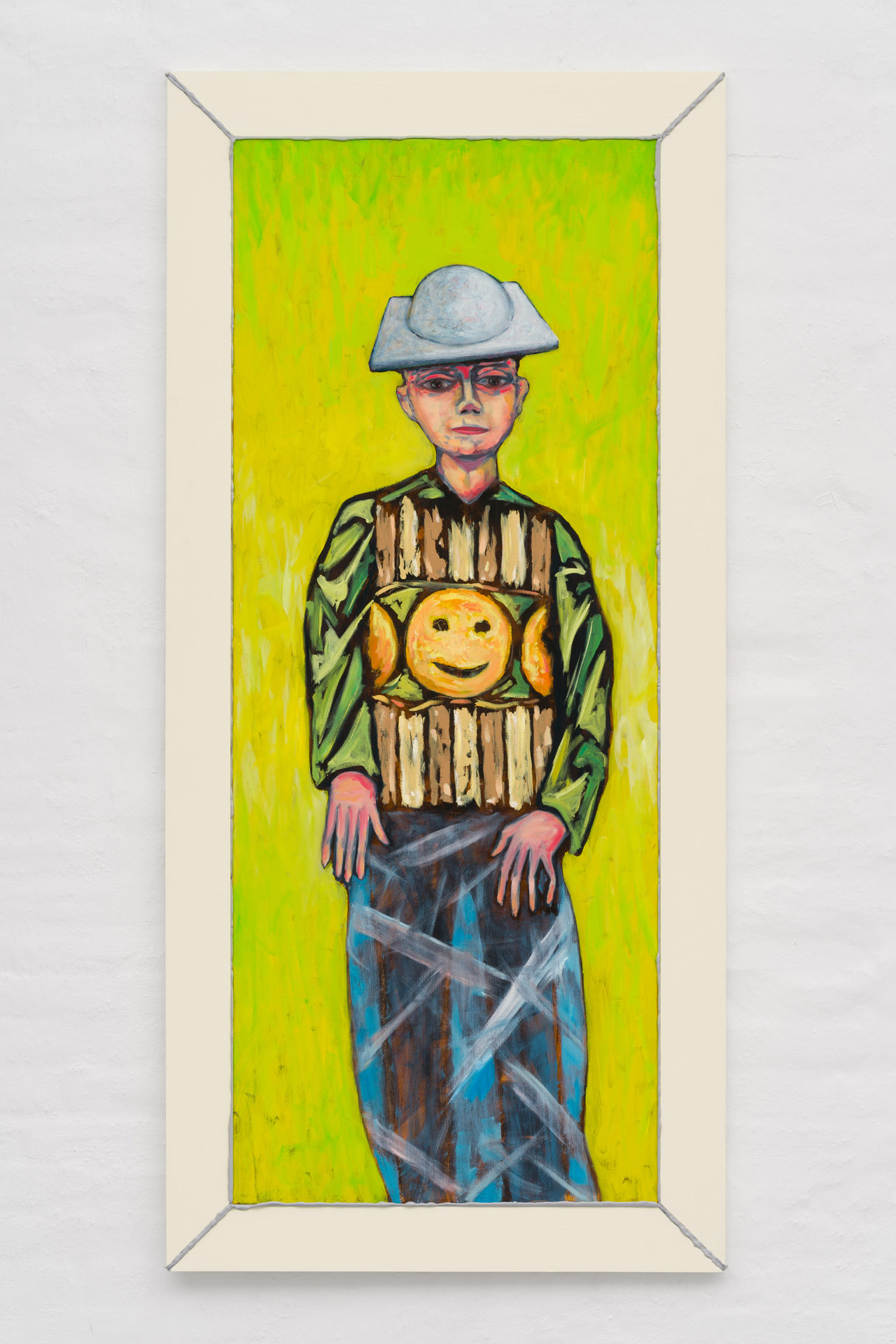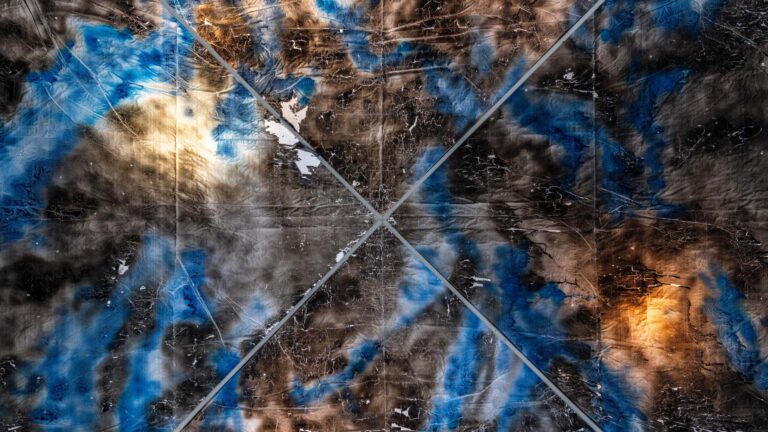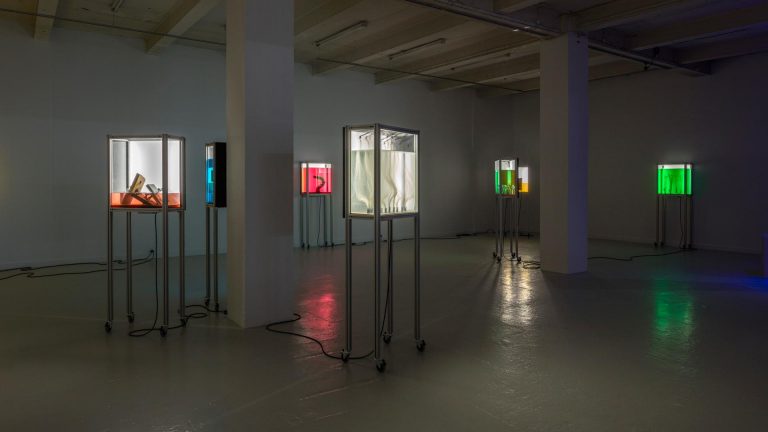Artist: Magnus Andersen
Exhibition title: Vocals and Lyrics
Venue: Huset for Kunst & Design, Holstebro, Denmark
Date: November 27, 2021 – March 6, 2022
Photography: ©David Stjernholm / all images copyright and courtesy of the artist and Huset for Kunst & Design, Copenhagen
Note: Exhibition floor plan is available here
Through a playful love affair with painting Magnus Andersen makes artworks that crawl under your skin; works where the cosy and the creepy walk hand in hand.
The title of the exhibition is Vocals and Lyrics, which according to Andersen points to every motif as a vocal exercise or a song lesson: A small lesson to train your voice and verbalize small compact narratives through lyrics. We are looking through multiple layers in the paintings, the thematic and methodological circles each other. Maybe we need to understand the vocal exercises as the painting techniques: when one nuance of red is used together with another nuance of red; when different styles are combined or when Andersen use oil painting in one work and then use acrylic paint on ungrounded canvas in another. And maybe the lyrics are the individual narrative of each work, where the stage is set and the psychological layers are applied.
In the piece An der Holstebroischn Heide I (translated from German: On the Moors of Holstebro) we find ourselves in the geographical vicinity of the exhibition space. The motif is a trimmed, round, green bush taking up most of the image surface and placed in the middle of the frame. On the bush hang pacifiers, like we see it on “suttetræer” (pacifier trees): a phenomenon where the transition from being a baby to becoming child is ritualized and you leave your pacifier behind by hanging it on a tree. How cute and tragic. In the front on the right side on the lawn a grey rabbit sits dressed in a red vest. Maybe it is a teddy bunny or maybe it is one of those rabbits that parents give their children so they can practice taking responsibility for a living animal before they are allowed to get the more valued puppy. There is something absurd and satirical about the title referring to the moors of Holstebro. The moors of Jutland are an almost sacred symbol of Danish nature and a popular art historical motif. At the same time the moors are a thoroughly kept piece of land, where some things are allowed to grow, and other things are consistently weeded out.
We find a young character wrapped in a blanket singing in a red hallway in front of a red door in the piece Musikalische Grundschule, Rot (school hallway magician) (the first part of the title translates: Musical Foundation Course, Red). This again brings to mind the local environment of the exhibition space and its affiliation with the town’s art school, including the music course MGK. The image has a snapshot-like feel to it and it seems like the figure is addressing us. But the mood of the very red painting is hard to grasp. What is in fact going on? In the exhibition we find two other portraits, including a seagull politely seated at a set table with a plate of asparagus and beetle roe, however in the piece Lächelnde Wolken ( hyggelig udsigt II) (Translates: Smilling Clouds ( cosy view II)) we zoom further out overlooking something that could be the farmland in West Jutland. The autumn-brown fields without plant growth are framed by narrow, green grass fences. Most of the image surface is made up of the sky above, on which, however, a kind of portrait does appear: a large, floating cloud that forms a kind of “smiley”.
In the exhibition Vocals and Lyrics our romantic ideas about country living, youth and “ the sweet life” become almost claustrophobic and sticky. The artist draws us in with a smile on our face, while a growing sense of unease takes hold of us. There is a great love for painting evident in both the motifs and the methods, not to mention the German titles that with a twinkle in Andersen’s eye nods towards the heavy painting tradition of the neighboring nation. Andersen’s works are aware of their own ambivalence, and you might say that he includes both sides of the coin. Nothing is uniquely good or bad.
Magnus Andersen (b. 1987) has graduated from The Royal Academy of Copenhagen and Städelschule in Frankfurt Am Main. He has had solo exhibitions at Neue Alte Brücke in Frankfurt, Gio Marconi in Milan, Kunstverein Wiesbaden and most recently at Tranen in Hellerup. Furthermore he runs the exhibition space Bizarro in Copenhagen with Louis Scherfig and Mai Dengsø.

